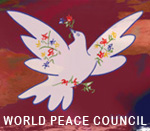CHINA+16CEEC COOPERATION – HISTORIC ACHIEVEMENTS
| Activities - China |
Zivadin Jovanovic, Belgrade forum for a World of Equals
- The Interview to Xinhua, July 5th, 2018 -
1. Since 16+1 China – CEE mechanism was launched in 2012, what benefits do you think it has brought to China and to CEE countries in general? Do you agree it has promoted cooperation of all fields among China and CEE countries?

- The mechanism of cooperation established in 2012 and later included into the Belt and Road initiative is a significant novelty in the relations between China and Europe, that contributed, first of all, to the modernization and construction of infrastructure for railway, road, sea and river transport. The cooperation was of mutual benefit to all sides, which is the guiding principle of Chinese relations with foreign countries in general, and especially with countries along the Belt and Road. This credible win-win principle is well respected in practice. A significant novelty is also that the direct flights have been established between major Chinese centers such as Beijing, Shanghai and Chongqing and capitals of Central and Eastern Europe – Warsaw, Prague, Belgrade and others. New cargo and passenger trains have been established. For several years already, railway connections operate between great Chinese economic centers and Warsaw, Prague and other cities of Central and Eastern Europe, stretching further to London, Madrid and other European centers. The ties (within 16+1) gained a new quality and brought new results. We also see the interconnection through sea routes such as the Land and Sea Express Line that runs from Chinese ports, through the Suez Canal to Piraeus in Greece, and then continues across land by railway from Athens, across Skopje, Belgrade, Budapest and further to Central Europe where it branches both to East and to the West. Road connections have been also significantly advanced. There are three strategic routes, Northern, Central and Southern. The third route runs across Pakistan, Iran, Middle East, Turkey, Bulgaria and Serbia (or to Romania to the north), and it is of special importance for this region. Another new and significant achievement is the blooming of tourism, which is important for direct contacts between people and nations that needs to follow the physical interconnection that strengthens economic ties. Cooperation in tourism, air transport, liberalization of visas (such as the visa-free regime between Serbia and China), culture, as well as between think-tanks and NGOs – all of this strengthens those direct connections between China and all countries of the Central and Eastern Europe. Other ways of cooperation are manifestations for young people and schoolchildren such as the “Joy of Europe” (held annually in Serbia), visits of theater groups, exhibitions, exchange in literature and poetry, advanced and accelerated dissemination of information, cooperation between media houses, televisions and newspapers… All this is a proof of a new quality in cooperation of Central and Eastern European countries
2. As CEE countries are either EU countries or EU candidates, how do you think of the opportunities 16+1 mechanism has brought to the development of Europe?
- The mechanism has demonstrated in practice how the connectivity works between Europe and China. This format of cooperation is a great contribution to the economic, cultural, social, informational integration of the Eurasian continent. It has affirmed itself as a strong strategic bridge of cooperation in all areas of common interest – trade, investments, infrastructure, culture and people-to-people connectivity – as well as integration and interconnection of every kind between Europe and Asia, especially European Union and China. I think that a great progress, even historical progress has been achieved, but that the opportunities are nowhere near to dry out. All sides need to support this format – all member countries and China, but also European Union that needs to show more understanding. Out of 16 members of the mechanism, 11 are EU member countries, and this contributes to the overall development of the EU and its integration, and the platform is compatible with the fact that China is the second biggest economic partner of EU (after US). On the other hand, EU is the biggest trading partner of China, and the members of the 16+1 mechanism immensely contribute to the strategic character of EU-China relations. Cooperation should be further advanced and it should cover new areas, in order not only to maintain continuity, but also to expand it and deepen its quality.
3. As 16+1 mechanism will be 6 years old now, what problems (of this mechanism) have you observed? (Not only for Serbia, but also for the whole mechanism.) What are your suggestions or measures? What needs to be improved?
- A) For the future of relations of China and EU and the future strategic role of the 16+1 mechanism the most important thing is to adhere to the highest quality in economic cooperation, transfer of technologies and innovations as well as the development of all countries by implementing the fourth industrial revolution. B) Second, it is important that all standards of technology, market, modern industrial development, green development and clean industries - are strictly and rigorously respected and adhered to. C) Third, when it comes to Serbia, I feel that we lack more direct Chinese investments, because I think that we entered a phase of new, quality development of comprehensive strategic partnership, that should be characterized by increase of direct Chinese investments instead of new loan arrangements, however favorable they may be. I feel that Serbia, with the role it had and the results it achieved – deserves this attention. We need more direct Chinese investments in the reindustrialization of Serbia. West has devastated Serbia’s industry through the process of privatization. Yugoslavia was an industrial power and it exported automobiles, tractors, airplanes, modern technologies, and even had potentials to start production of new modern helicopters… Criminal privatization destroyed best that Serbia had in industry and technology, and it also destroyed research centers and science. I think that because of the closeness between Serbia and China, the leading partner in reindustrialization of Serbia should be China. As an EU candidate, Serbia has a bigger maneuver space than other countries within 16+1 for a faster expansion of cooperation with China. Serbia is already a Chinese expo in Europe – Chinese bridges, highways, high-speed railway, electric buses, Bank of China that has regional headquarters in Belgrade - but first of all let it become an expo of the Chinese green technology of fourth generation. It is also important for China to maintain its credibility as a promoter of win-win cooperation. This type of cooperation is promoted by some other countries, but none of them has China’s credibility, both in eyes of Central and Eastern Europe, as well as other parts of the world. D) Having in mind that 11 out of 16 countries are members of the EU, while the rest are candidates, it is important at the same time to strictly follow both EU regulations and the freedom of independent decision-making of EU members and especially candidates. Brussels must not introduce any quotas or limitations and burden the further progress of these countries – because this is the precondition for the progress of the EU itself. E) Another idea that I have, that I find significant is the establishment of multinational, regional, multidimensional development project which I call “Three Rivers” – Danube River, Morava River and Vardar River, and which I presented last year at the development forum in Shanghai. It should both include railway, road and river interconnection but as well as the economic interconnection, especially when it comes to the development of the wider region to the East and West of this corridor. This project does not only have immense development potential for the area of transport, but also for food production, electronics industry and many other branches. It is the shortest way from Central Europe to Mediterranean. F) For Serbia a complete modernization of railway and road transport is of vital essence on the route Teheran-Ankara-Istanbul-Sofia-Nis. An existing route leads from Istanbul to the North towards the Baltic Sea and it has a political character as it was forced by NATO due to its policy of antagonism against Russia. They made this highway without any economic justification, in a way trying to bypass Balkans and Serbia. I believe that it is in the best interest of Serbia and its leadership to modernize the country within the Belt and Road initiative, and the road and railway route Teheran-Ankara-Istanbul-Sofia-Nis that would connect to the future Nis-Belgrade-Budapest high-speed railway is very important. G) I feel the interests of economy and economic interconnection should be prioritized. When the 16+1 cooperation platform was established in 2012, I think that there was some kind of a political criteria, because the group included all former socialist countries – both EU members and non-EU countries of the former Yugoslavia. Turkey is not included although it is partly a Balkan country, nor is Greece. I think that expansion should be considered so that the 16+1 format could include these two countries and become 18+1. These countries gravitate with their economy and strategy towards South East Europe, and even if they are not included, they still have an important role in the realization of the global strategic initiative of president Xi Jinping. There is no economic logic in keeping them outside of the 16+1 format. This would bring a new motivation and new energy to the overall cooperation. In example, the Land Sea Express Line cannot be achieved without Greece, Macedonia, Serbia and Hungary. It would be simpler to cut procedures and customs if 16+1 would include Greece and Turkey. That would be also a great benefit to security, people-to-people connectivity and peace. This initiative could have a positive influence to disputes between Turkey and Greece, as well as in the wider region. This is all a part of a wider concept of peace, cooperation, security in the Eurasian continent.
4. Some Western media say that the 16+1 mechanism is to split Europe. What’s your idea?
- Europe does not need foreign assistance to be divided. It divides itself. It is neither divided by China nor Russia. Maybe its being divided a little bit by the US. What divides Europe are – its difficulties. There are too much member countries. It is a robust mechanism. They accepted many members due to political, and not economic criteria in order to repay their debt to countries such as Romania, Croatia, Hungary and Bulgaria for their help in NATO aggression (on Yugoslavia) in 1999 and making their territories available for conceiving attacks. They were received without meeting technical and economical preconditions. It is clear that these countries are less developed that Western Europe. 25 million has left Central and Eastern European countries and fled to the West (UK, France, Germany). Today people talk a lot about migrations, but Europe has its own migrations. Yes, it is true that EU is divided, but China has nothing to do with this division. With the 16+1 cooperation platform, China supports integration, not division. China and the countries of the 16+1 mechanism should stick to their own economic interests, and discourage all geopolitical ideas that dominate in Brussels, London or Berlin. West is burdened with geopolitics and sees danger everywhere. They are afraid that someone will do something without them controlling it. This cooperation should be advanced on the bases of mutual economic interests. It is naturally a factor of peace, stability and security. It is also a factor of connectivity in culture and other areas. I think that China and other countries should have in mind the undisputed facts: EU entereda crisis a long time ago and trends do not show recovery but deepening of the crisis. As the crisis deepens in different areas and along different lines, the decision-making capacity of Brussels regarding cooperation between EU and China decreases. Brussels is preoccupied with existential issues of its own reform, and there is no strength to adopt an important agreement such as the one with China, in the area of investments. EU is facing different difficulties and blind alleys. Europe is now implementing the same type of protectionism it criticizes in the US. They criticize Trump for raising tariffs by 20 percent on aluminum and 10 percent on steel from Europe. They criticize Trump for raising tariffs for luxury products from Europe such as Mercedes cars. But at the same time, they made an entire list of products from the US whose tariffs will go up. Europe is struggling against trade wars in principle, but in practice it partakes in that trade war. It is acting in a protectionist manner. It accuses China of giving big subventions for its products which are not in line with market rules, so it considers to introduce additional tariffs on Chinese steel and other goods and protect its own market. Is it protectionism or what? Europe adopted measures and a list of things that are not meant for sale to parties outside of the EU – to partners such as China and others. EU announced that it will not sell its potentials and projects in the area of energy, infrastructure, electronics, telecommunications, etc. Why? The explanation was these are necessary for security of Europe and cannot be sold to outside factors. Second reason was, can you imagine - that Europe will not allow exploitation by other partners. It is completely fine for EU to build a whole management system of global economy in order to keep its own privileges, but on the other hand, free competition, in a time when EU cannot survive such competition – is not fine. This speaks of egoism and double-standards in policy. Essentially EU is the one suffering from closing down and protectionism. If China 20 years ago, through policy of reforms and opening up, achieved fastest growth in the world and developed most advanced technologies; if it became a county with highest contribution to the global GDP – then the time came for the EU to consider the recommendation to reform and open up. This is the right path, and not - to close down and seek for guilty parties in other places! This is why it is not going on very well for the EU, and this is why it has problems. As I said, Europe divided itself – the new one and the old one; Visegrad group and the rest; Eurozone and the others; those willing to suppress massive migrations with walls and others; Europe is divided along many different lines, and it needs to turn inwards and locate problems in its own ranks and in its own inadequate structural approach. Especially, EU should see China that way, because China does not have this tradition of imperial Western countries to divide others in order to rule over them. China is satisfied to be left in peace, without outside support to Dalai Lama or Formosa or anyone. Now came a moment when the EU is preoccupied with its own native divisions, and when it fails to overcome deepening crisis. In these circumstances it is not realistic to expect important strategic decisions from Brussels regarding cooperation and relations with China. Capacities of Brussels had weakened, and all it does comes down to locating for the guilty ones in wrong places, because it cannot admit that EU itself caused the crisis. In these circumstances China should maintain an active position towards Brussels, especially around investments. However, it needs to solve practical problems directly with Berlin, Rome, Paris and London. In a crisis deep as this one, not much can be achieved through Brussels, and centers I mentioned have bigger capacities to solve problems. Enditem
| < Prev | Next > |
|---|
| Overstatement from Davos 2017. |
Liberal corporative capitalism, for reasons of lowering traveling costs, proposed not to travel to history alone but packed togather with NATO, EU and unipollar World Order. Workers participation has good chances to step in provisionally, buying time for full scale workers selfmanagment. |









